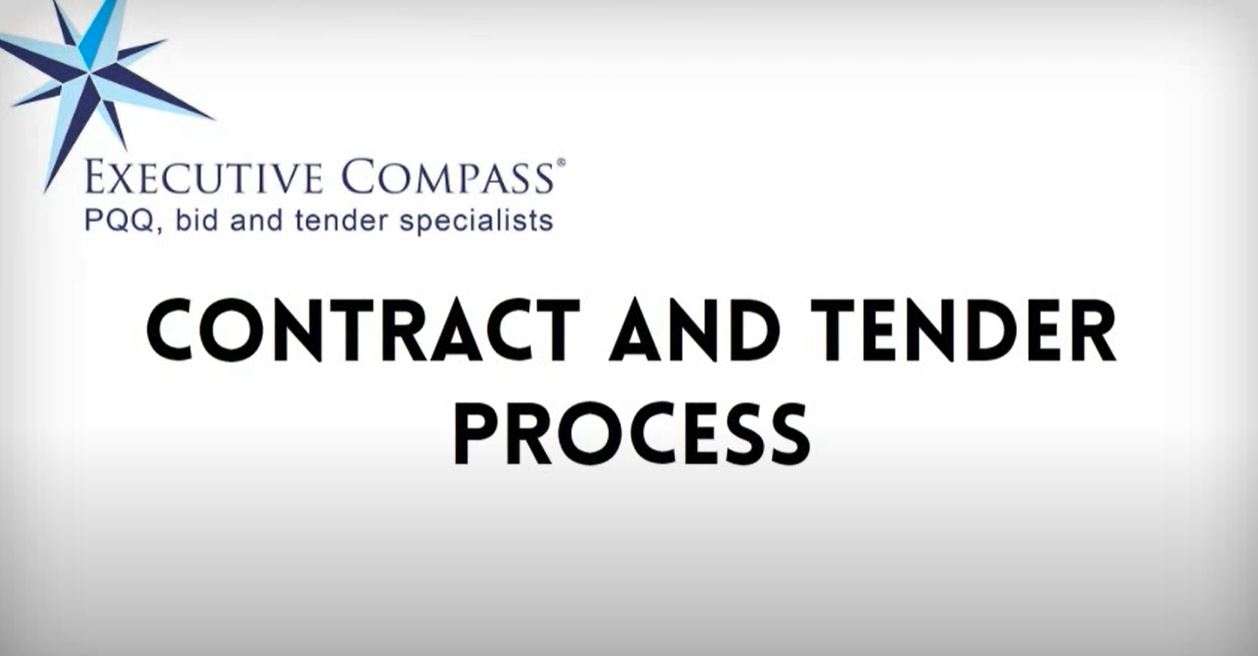What is a tendering process?
The tendering process is how the public sector and other organisations procure goods and services. It is structured to be fair and transparent, comprising expressions of interest from bidders and a stringent selection process as part of the procurement.
Prospective bidders often come to us asking ‘what is the tendering process?’ and what it involves. Typically, the process is as follows:
- Contract notice: the contract or framework agreement is advertised by the buyer, containing top-level information about the contract and relevant dates for the submission. This is advertised publicly, and all contracts over£12,000 are advertised.
- Open or restricted procedure: if the tendering process is being run under the ‘open’ procedure, the selection questionnaire (SQ) or pre-qualification questionnaire (PQQ) are completed alongside the invitation to tender (ITT) for a single shared deadline. Under the ‘restricted’ procedure, the SQ or PQQ are completed first, and only those bidders who are successful at stage one are invited to tender. Importantly, following the enactment of the Procurement Act 2023, restricted procedure tenders have been replaced by the new ‘competitive flexible’ procedure, but the open procedure is unaffected.
- Complete the bid: all documents required for submission are completed and returned by the bidder. This usually consists of ‘sign and return’ documents such as the form of tender, alongside the pricing and quality elements of the submission. Typically, responding to the written, quality questions is the most time-intensive and specialist element of the submission. This can include 6,000 – 10,000 words of narrative on average.
- Evaluation: the submission window is closed, and bidders’ pricing and quality responses are evaluated by the contracting authority. This process can take several weeks or even months, depending on the size of the submission and number of bidders.
- Contract award: bidders are notified of a successful or unsuccessful outcome and are provided feedback from the evaluation stage. The ‘standstill’ period commences, which is typically 10 working days – during this time, potential suppliers can issue challenges to the outcome. The result is then published.
What does the tender process involve?
Each tender process is different depending on the contract in question and the buyer’s specific priorities and evaluation criteria. However, public-sector buyers must comply with specific rules and regulations to make the tendering process fair and transparent.
A tender document — also known as an ITT, tender bid, or request for proposal (RFP) – is the stage in the bidding process where you need to explain how you will deliver the contract, including your technical solutions and pricing proposals. Your company must provide high-quality, persuasive narrative responses in the tender document to demonstrate why your proposed service model and working methods represent the best value for money for the buyer.
This is your opportunity to stand out against your competitors in the procurement and showcase why you are the right organisation to deliver the contract. The buyer will then shortlist the most suitable bidders, before finally selecting a winning tender.
Bid documents are not evaluated solely on the lowest price; you will also be evaluated on a narrative-based quality section of the invitation to tender document to demonstrate your proposed methodology for contract delivery. Contract opportunities often involve competitive bidding, where the goal is not just to offer the lowest price but demonstrate how works or services will be delivered to a high quality.
For guidance on structuring your narrative responses in a tender and exactly what to include, see information on how to write a tender.
Tendering is a competition
It is also important to remember the reason for the tender document and bidding process: they enable the contracting authority to identify the most advantageous tender.
Simply put, the organisation that submits the highest quality bid response at the best price is who will win the tender and be awarded the contract.
You must make sure your company stands out from your competitors in the bidding process. This may be through including added value, USPs and bid win themes in your tender submission.
Using professional tender writing services will support your organisation to submit a successful tender. To maximise your tender score, research your main competition and then stress how your company differs from others, which could be through innovations and added value.
Different types of tendering processes
For most tendering opportunities, public sector buyers will typically use one of two different types of public sector tender procedures. The main types are:
Open tender
Also known as the single-stage tender, the open tender process is open to any interested suppliers, contractors or service providers who meet the minimum qualification criteria. Open tenders will be publicly advertised alongside the submission deadline, and any bidder who self-assesses that they can meet the minimum eligibility thresholds can submit their tender response. Open tendering provides an equal opportunity to suppliers, contractors or service providers.
Restricted tender
Some contracting authorities will choose to employ a restricted tendering process, also known as selective tendering, where a limited number of bidders are permitted to submit proposals or tenders. Invitations usually follow success at the initial pre-qualification questionnaire (PQQ) or selection questionnaire (SQ) stage.
Whilst the vast majority of public sector tenders are run under either the open or restricted procedure, buyers may also follow different types of tendering, like other, less common procedures such as competitive dialogue, innovation partnership or negotiated procedures.
The introduction of the Procurement Act 2023 means that the types of tendering procedures will be reduced to two. This will consist of:
- The typical single-stage ‘open’ procedure, where any interested party is invited to bid, and;
- The new ‘competitive flexible’ procedure, which will allow public sector buyers to tailor the tender process to their requirements.
Executive Compass can support you throughout the tendering process, helping you complete:
- The Procurement Specific Questionnaire, introduced in 2025 this is a pre-qualification document like the selection questionnaire
- The selection questionnaire (SQ), comprising standard company information and data responses
- The invitation to tender (ITT) document and quality questions attached
- Common appendices and attachments, such as organisational charts
- Other important tender documents required by the authority.
With a success rate of 85% across all projects and bids, we will help you to understand exactly what the tendering process entails, what the buyer is looking for in the procurement process and the procedures you need to follow in order to submit a successful tender bid for a product or service.
Tender examples and references
At the tender stage, when a buyer issues requests for proposals, you need to include examples and references to demonstrate your organisation’s capabilities as part of the procurement. Exemplify your use of best practices and customer support in your management of your current contracts.
If you do not have a library of documented examples and references to use in tenders and quotations, our expert bid writers will help you create one, based around your business and your clients, to help you demonstrate your track record and capability, thereby maximising your tender score from your PQQ and tender submissions.
The tender evaluation process
Once you have submitted your tender bid to the contracting authority (this may be a local council, NHS or a housing association), they will review your financial and quality elements against the published evaluation criteria and weightings to determine the most economically advantageous tender.
Whatever the outcome of the tender evaluation process, and your submission, you should request feedback to support lessons learnt and continual improvement. Typically, the authority will produce a scorecard of all the tender responses, so you can see where you have ranked in the tender evaluation process, informing your future bidding strategy.
If there are certain criteria for which you have scored highly, save these responses in a bid library to help guide future tender processes.

